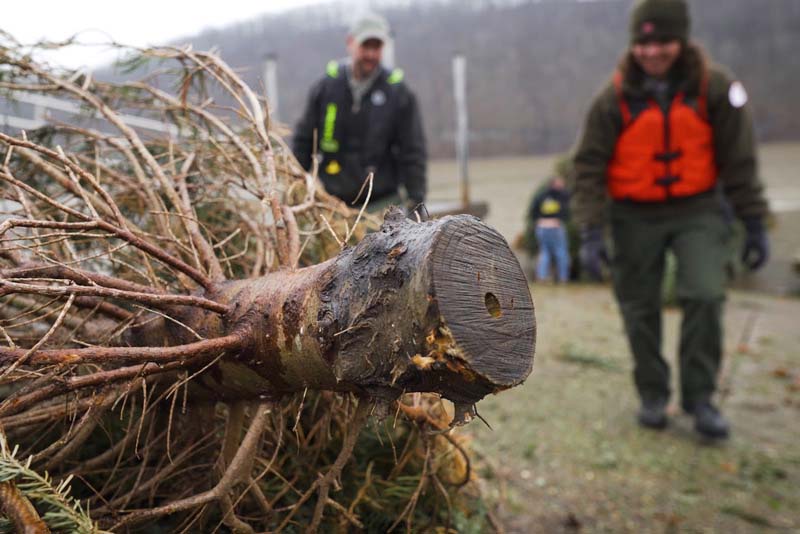MORGANTOWN, W.Va. — If you’ve driven by the Ices Ferry shore access lot in Cheat Lake recently, you may have noticed a pile of Christmas trees lying in the gravel parking lot. But don’t fret, the trees aren’t illegally dumped there by some ne’er-do-wells that needed a quick escape from the pain of disposing their browning holiday fir — the Division of Natural resources is actually using them for good.
“We try to concentrate our Christmas tree efforts around places we have shore access or fishing piers. That way we can attract more fish where people tend to fish,” assistant fisheries biologist Aaron Yeager said in an interview with the DNR’s media team. “Most of our reservoirs are lacking in complex, woody cover, so any type of structure we can make with the Christmas trees we collect or other types of brush are really beneficial.”
Some fish need wood to spawn or for protection from predators, and with a lack near some shore access areas in the state — and especially at Ices Ferry and around Cheat Lake — the program is a pivotal step toward increasing fish numbers.
And though some minds may wander to the realm of a browning noble fir sticking out of the water, that’s not the case. Instead, they sink them.
“When Christmas trees are ready for us they tend to be dried out a lot, so you need to add some ballast,” Yeager said. “We typically use concrete blocks — you can tie three or four trees to a typical 8-by-16 block you use to build your house.”
Yeager, stationed in District 3, splits his time between five reservoirs and divides around 1,000 trees among them.
“When you add complex, woody cover to a reservoir you basically create a food chain that starts from the bottom up. Everything that makes primary productivity works on the medium we create with these reef structures,” Yeager said. “It’s a win-win, and we need more of it in every reservoir in West Virginia. The mindset of the flood control system was to have a large capacity reservoir that can withstand heavy flooding, and the fish community was an afterthought. The habitat aspect of a reservoir kind of went largely unchanged for the last 50 years — we’re trying to create a more natural fishery.”
So the next time you’re at Ices Ferry or along Cheat Lake and you hook a pretty bass, walleye, perch or pike, be sure to thank the Division of Natural Resources — and maybe even Santa — for the gift that keeps on giving. And while you’re at it, consider donating your tree at the end of the holiday season this year.
TWEET @ASpellman_DPost




